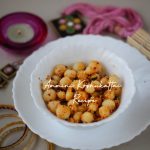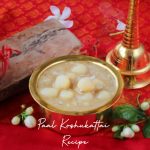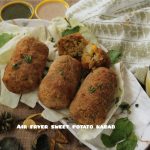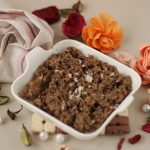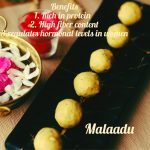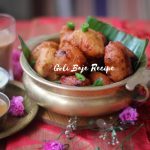An Introduction To Sweet Kozhukattai:
Relish this festive delight Sweet Kozhukattai or Modhakam which satiates not only your palates but also your soul with nostalgic memories..
An Outlook On Sweet Kozhukattai:
Kozhukattai is an exemplary traditional sweet dish that originated from the Indian subcontinent. It is a dainty delight that is made extraordinary with just a few ingredients and lots of love and pride.
Introduction:
India has rich culinary heritage dating back hundreds of years and sweets and savories occupy an exclusive place in the Indian gastronomy. There are innumerable sweet delicacies all over the country that allure you with its appetency and the history of Indian Cuisine dates back over five thousand years and sweets occupy a prominent place for centuries. With the inclusion of milk, coconut, jaggery, cardamom, ghee, flour (rice, besan and maida) and lentils as predominating flavors mostly, there is no dearth of desserts in India, where ingredients and aromatic spices have not been played with. Thea Sweet Kozhukattai is one such remarkable example of a culinary masterpiece which makes a perfect amalgamation of rice flour, coconut, jaggery and ghee. The sweet dumplings called as the puran is made of grated coconut, jaggery and ghee while the outer soft shell called as choppu is made of rice flour commonly.
Its Versatility:
The minute we hear the word Modhakam or Poorana Kozhukattai we are reminded of the festival Ganesh Chathurthi although it is prepared for quite a few other festivals like Navrathri, Sankata hara chaturthi and most popularly used as offerings in yajna (homam or havan) conducted at temples and homes as well. The word Modhakam means "tiny parts of Bliss" and it implies spiritual knowledge too. Ganesh Chathurthi and kozhukattai are inseparable and it is a delightful sight to watch people celebrating this festival in a grand manner with clay idols of Lord Ganesha which may vary in size from tiny one to giant size Ganesha.
There are quite a few varieties of Kozhukattai and the most popular ones are steamed Kohzukattai and deep fried Kozhukattai. Amazingly, we have plenty of fillings in Sweet Kozhukattai and some of the popular varieties are coconut, sesame, chana dal, semolina and khoya. The fried kozhukattai is usually made of semolina which is quite firm and crispy on the outside with the soft coconut filling on the inside.
Its distinctiveness :
Here we are discussing about the most famous Sweet Kozhukattai, which is not only Lord Ganesha's favorite but everyone's all time temptation. The aroma that comes out of freshly grated coconut when fried in a little ghee is inexplicable, and the flavor reaches its zenith when jaggery and cardamom are added to it. The pooranam melts in our mouth in the very first bite and it tantalizes our taste buds to want for more. The nuance actually starts from making the pooranam and ends at making the Choppu (outer mould) which is almost in the shape of an onion bulb or a flower bud like shape which has some tiny folds around. This seemingly easy Sweet Kozhukattai actually needs some expertise to attain perfection which we would gain by practice. When I was a child I have seen my grandma and mom preparing hundred and eight kozhukattai within hours at one stretch for the festival and sometimes if the prayers are intense and elaborate the number would even exceed up to thousand and eight. The swift and expertise they showed with their fingers looked magical to me and I used to watch them with awe. When I started to make it alone, I was a little nervous but it came out so well. Surprisingly even our maiden attempt will get substantial applause because of the alluring taste that the blend of pooranam and choppu brings in. We will discover new techniques by ourselves in each and every attempt we make which will improvise our outcome within a few trials.
Here comes one of the treasured recipes of Indian Grandmas, the most popular Sweet Kozhukattai recipe, that has been passed onto generations with ardent fervor and delight.
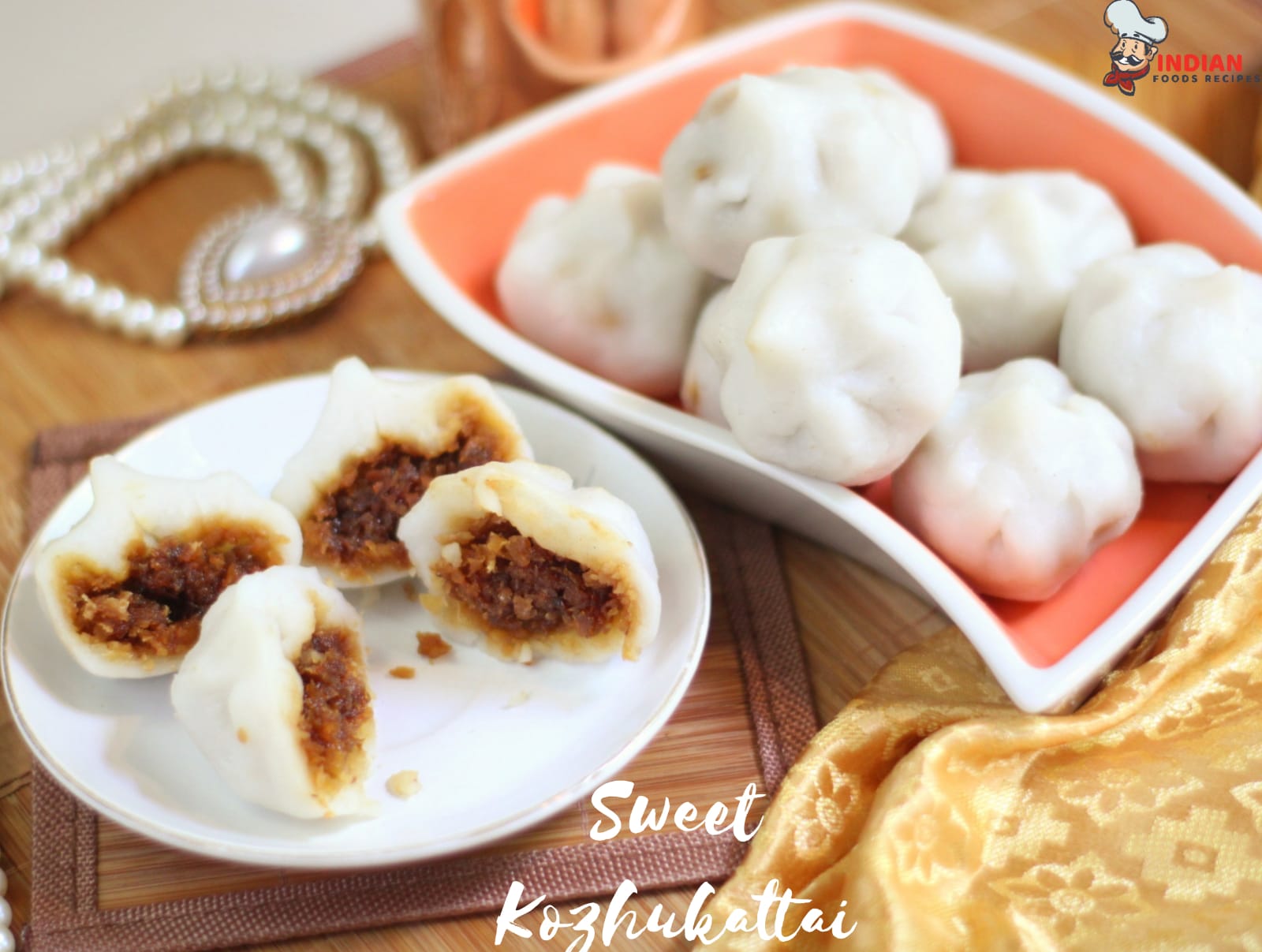
Ingredients Required To Make Sweet Kozhukattai:
How To Make Sweet Kozhukattai:
Heat a heavy bottomed pan and tip in a little ghee. Just after a few seconds add two cups of freshly grated coconut and stir in for a few seconds.
Let the flame be in low medium mode and when the aroma starts wafting out from the coconut, just sprinkle in the measured quantity of jaggery and keep stirring for a while until they blend together.
After two or three minutes, add a little cardamom powder with a nice stir.
When the whole mixture reaches the right consistency (thick and sticky) just turn off the stove and keep it aside. Let it cool for a while until the outer cover gets ready.
Take two cups of raw rice and soak for two hours approximately after washing it well.
Approximately after two hours, just drain the water thoroughly well and spread the soaked rice over a white muslin cloth.
After a few minutes (ten to fifteen minutes approximately) drop the rice grains in a blender and make a fine powder out of it. Sieve it once to make it still more fine and now the rice flour is ready.
Now heat a heavy bottomed vessel and pour in two and a half cups of water and let it boil in high flame. Tip in a teaspoon of gingelly oil with one or two pinches of salt.
Just after three to four minutes, lower the flame and gently squirt in the rice flour into the water while stirring continuously.
Keep stirring softly in low flame until the dough becomes a whole lump.
At some point, the dough will become a whole mass and will roll non sticky in the vessel.
At that stage, just turn off the stove and let the dough cool for a minute or two.
Then knead it delicately like a roti dough and keep aside.
Grease your palms with a little oil and take a small portion of rice dough (approximately in the size of a large gooseberry) and roll it into a little ball.
Now flatten the ball and bring it into the shape of a tiny bowl by tapping with your fingers in a circular motion which is called as choppu.
Then take a tablespoon of pooranam and fill it inside the cup shaped choppu and close it with your fingers roughly.
Fold it as if you roll a dough ball in a hand kerchief (with the folds) so that you get some creases around.
Bring the excess dough to the top and make a pointed tip to give it a shape.
Similarly, make even sized puran balls and do the filling correspondingly. You can also use ready made moulds to make the kozhukattai.
Take the Idli cooker and pour in two cups of water and let it boil for a while. In the meantime grease the idli plates and place two or three dough balls in each mould and arrange it in the idli cooker and pop the lid on.
Let the flame be in low medium mode and allow it to boil for five to seven minutes approximately.
Within minutes, the aroma will start wafting out from the cooker and at this stage turn off the flame and after five minutes open the cooker and now the delicious kozhukattai is ready.
Take each kozhukattai using a spatula and arrange it in a serving bowl and serve it with any savory according to your choice. A sip of aromatic filter coffee in between will be fabulous.
Tips To Improvise The Kozhukattai:
- As much as possible use freshly grated coconut to make the pooranam to get the desired result.
- Raw rice serves the best to make the outer cover and and let it soak at least for a minimum of one hour. And any variety of raw rice available at your place will suffice.
- Sieve the rice flour once to get a smooth powder and you can store the remaining rice flour in an air tight container as it is one of the much required staples in any Indian kitchen, a multi purpose thickening agent used in the day today cooking.
- Melt the jaggery with a little water and strain it before use to get rid of impurities if any.
- Achu vellam and katti vellam suits the best to make pooranam rather than karuppatti vellam or naatu sarkarai.
- Instead of ghee you may also use coconut oil or sesame oil all of which are equally aromatic.
- While making the outer cover (choppu) let the dough be neither too thick nor too thin. If it is thick, it may hold a big spoon of pooranam but won't be interesting to bite on. On the other hand, if it is too thin, it will tear out while steaming. So the trick lies in making the choppu in the appropriate texture which comes automatically at ease after a few attempts.
- You need not strain yourself to get the perfect shape. Just take a small lemon sized dough and place it on your left palm. Make a random hollow to fill in the pooranam and collect all the dough on top in closure (as if you close a flower bud) and any fold within will give you the shape of an onion bulb automatically. Just be mindful about making a tiny pointed tip on top as it is the trademark shape of kozhukattai which gives a grand finish to the Kozhukattai.
- There are ready made moulds available in the market both in plastic and as well as in metal which is quite easy to use. And it is really quick and handy to handle both and you get delectable even sized Kozukattai.
- If you use an Idli cooker, steaming for about five to seven minutes in high flame will be fine and if you keep it in low medium flame ten minutes will do. If you place it in electric rice cooker, it will take about eight to twelve minutes approximately and it may slightly vary according to the size of the cooker you use. The steaming part is quite easy in either way. Just see to it that you do not add excess water at the bottom of the cooker to avoid any mess or rather mushy I would say.
- If you want an authentic touch, you can place the Sweet kozhukattai over pieces of plantain leaf while steaming and you will find it really amazing and the difference it makes is fantabulous and it is one of the healthy ways of making it too.
- You can make it in any size you want using either your hands or ready made moulds that are available at all Indian cookware shops or stores in different shapes and sizes. Kindly do not forget to grease both with a little oil before use after washing them well.
- Kozhukattai can be served hot, cold or at room temperature and surprisingly it tastes astounding in all the ways and I would vouch for it.
Ingredients
Directions
Heat a heavy bottomed pan and tip in a little ghee. Just after a few seconds add two cups of freshly grated coconut and stir in for a few seconds.
Let the flame be in low medium mode and when the aroma starts wafting out from the coconut, just sprinkle in the measured quantity of jaggery and keep stirring for a while until they blend together.
After two or three minutes, add a little cardamom powder with a nice stir.
When the whole mixture reaches the right consistency (thick and sticky) just turn off the stove and keep it aside. Let it cool for a while until the outer cover gets ready.
Take two cups of raw rice and soak for two hours approximately after washing it well.
Approximately after two hours, just drain the water thoroughly well and spread the soaked rice over a white muslin cloth.
After a few minutes (ten to fifteen minutes approximately) drop the rice grains in a blender and make a fine powder out of it. Sieve it once to make it still more fine and now the rice flour is ready.
Now heat a heavy bottomed vessel and pour in two and a half cups of water and let it boil in high flame. Tip in a teaspoon of gingelly oil with one or two pinches of salt.
Just after three to four minutes, lower the flame and gently squirt in the rice flour into the water while stirring continuously.
Keep stirring softly in low flame until the dough becomes a whole lump.
At some point, the dough will become a whole mass and will roll non sticky in the vessel.
At that stage, just turn off the stove and let the dough cool for a minute or two.
Then knead it delicately like a roti dough and keep aside.
Grease your palms with a little oil and take a small portion of rice dough (approximately in the size of a large gooseberry) and roll it into a little ball.
Now flatten the ball and bring it into the shape of a tiny bowl by tapping with your fingers in a circular motion which is called as choppu.
Then take a tablespoon of pooranam and fill it inside the cup shaped choppu and close it with your fingers roughly.
Fold it as if you roll a dough ball in a hand kerchief (with the folds) so that you get some creases around.
Bring the excess dough to the top and make a pointed tip to give it a shape.
Similarly, make even sized puran balls and do the filling correspondingly. You can also use ready made moulds to make the kozhukattai.
Take the Idli cooker and pour in two cups of water and let it boil for a while. In the meantime grease the idli plates and place two or three dough balls in each mould and arrange it in the idli cooker and pop the lid on.
Let the flame be in low medium mode and allow it to boil for five to seven minutes approximately.
Within minutes, the aroma will start wafting out from the cooker and at this stage turn off the flame and after five minutes open the cooker and now the delicious kozhukattai is ready.
Take each kozhukattai using a spatula and arrange it in a serving bowl and serve it with any savory according to your choice. A sip of aromatic filter coffee in between will be fabulous.

